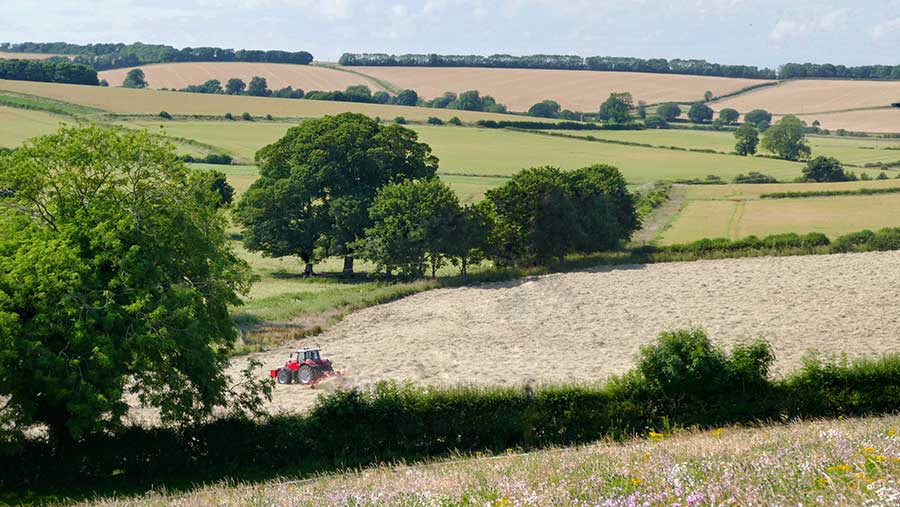Advertiser content
Grass and forage: A strategic, sustainable choice for farmers
 © Barenbrug
© Barenbrug Farmers who take a more holistic approach to pasture management can find it will pay dividends for flock health, grazing utilisation and overall enterprise economics. Versatile and valuable, grass plays an important role on any farm.
UK farmers have a successful track record for grass, thanks in part to a climate that’s so grass-friendly.
Our ambition is to improve that track record further – to make that return on investment, we look at what is beyond the ‘standard’ metrics such as productivity and dry matter content.
Our primary focus is grass genetics improvements – the varieties we’re breeding and trialling now will provide the leys and silage cuts of the mid-2030s. Pastures that feature not just a mixture of grass varieties, but also herbage and other broad-leaved species can convey considerable benefits.
Multi-species benefits
Many farmers are already aware of the importance of multi-species. It’s widely accepted that these mixed swards can deliver a higher liveweight gain when compared to PRG and PRG/WC swards.
Greater emphasis on legumes in the sward can also achieve the same dry matter yield, without the same reliance on big-bag nitrogen. A mixed sward makes for healthier stock, improving the quality of replacements for the flock or herd.
Studies show a mixed sward’s ability to boost the animal’s immune system, resulting in fewer subclinical losses and reduced vet and medical bills. This is largely attributed to a mixed sward’s ability to access more of the soil’s nutrients.
Deep-rooting species – herbs such as plantain and chicory, and legumes like red clover – draw up valuable trace elements from lower soil profiles.
Otherwise inaccessible to the ‘usual’ PRG ley, the presence of these micronutrients creates a healthier, more nutritious ley. Those same deep roots also instil drought tolerance to a pasture – something certainly noticed during the summer of 2022.
These dense, complex root systems, produce root exudates that feed and build the soil microbiome, boosting soil organic carbon and improving soil fertility and structure.
But these root-microbe interactions can be curtailed by over-reliance on synthetic nitrogen fertilisers. It seems paradoxical but, by cutting back on nitrogen application, you can help your pastures make more efficient use of existing soil nutrients.
Beef and sheep farmers will be more attuned to these trace element deficiencies.
Typically, subclinical losses include decreased daily liveweight gain or milk yield, increased parasitic burdens and lower immunity to other diseases, or reproductive issues such as lower conception rates and poor colostrum quality and yield.
More specific deficiencies are identified with copper, cobalt, selenium and zinc. But it’s worth pointing out that in general, grass species tend to be commonly deficient in phosphorus, magnesium, copper and cobalt, while clovers tend to contain higher levels of these trace elements, and herbs higher still.
Anthelmintic characteristics
It is the anthelmintic characteristics of certain herbs that are of most interest. Nearly 40 years since identifying the first case, benzimidazole resistance is thought to affect 90 per cent of British sheep farms.
Given growing evidence showing the damaging effect of chemical anthelmintics on invertebrate biodiversity, plus the practical difficulties and effects, natural control looks particularly attractive. Chicory is one of the leading herbal contenders.
It’s been shown to result in reduced egg count and adult abomasal worm numbers in lambs, although the results are less evident in adult sheep and there appears to be no effect in cattle.
It is also possible that substances within chicory act directly on the parasites, or reduce their activity.
Other plants, including sainfoin and birds-foot trefoil, contain compounds – condensed tannins (CTs) – known to be anti-parasitic. CTs decrease egg numbers, reduce hatching, impede larval development and inhibit larval mobility.
Another benefit is improved feed protein utilisation, not only improving meat and milk yield but reducing the amount of nitrogen excreted in urine. CTs also impede methane-producing gut microbes, which can reduce methane production – another environmental benefit.
At Barenbrug, we’re committed to this concept of wholesome pasture – robust, high-performing grass genetics complemented by valuable diversity in companion species, and a holistically focused management approach.
Developing and supporting this concept is a leading element of our total commitment to helping all UK farmers.
#growyourfuturewithgrass
Provided by
Barenbrug UK specialises in grass breeding and production for agriculture, sport and leisure. The Barenbrug name has been synonymous with the introduction of innovative grass solutions and is raising the standard in the research and breeding of forage and amenity grasses in the UK.
